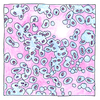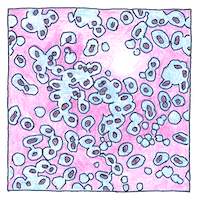George Miller Sternberg,
Louis Pasteur
bacteriology

|
Streptococcus pneumoniae
Pneumonia, lobar pneumonia is commonly caused by a bacterium, streptococcus pneumoniae, as discovered at the same time by George Miller Sternberg and Louis Pasteur ten years before the discovery of X-rays and fifty-five years before antibiotics.
Work in the field
Sternberg, a physician for the U.S. Army, wrote the Manual of Bacteriology in 1892, confirmed that bacteria caused pneumonia, tuberculosis, and typhoid fever, and pioneered disinfection in America. * Pasteur is known as the father of microbiology. He proved that germs cause infectious disease, and that microbes cause fermentation. He discovered anaerobiosis. He invented pasteurization, and he created vaccines for rabies and anthrax.
Ancient history
The disease was known by the ancients, described by Hippocrates and Maimonides as causing fever, cough, pain in the side, and a blond, frothy, or florid expectorate, described by William Osler as “the captain of the men of death” and is still the leading cause of death of the young, the old, and the chronically ill.
Still kills
Concerted efforts eradicated smallpox but pneumonia still kills.



Streptococcus pneumoniae, like other bacteria, is a resilient germ. Some strains have become resistant to some antibiotics. Pneumococcal conjugate vaccines for children have begun to reduce the risk.
See also in The book of science:
Readings in wikipedia:
Other readings: